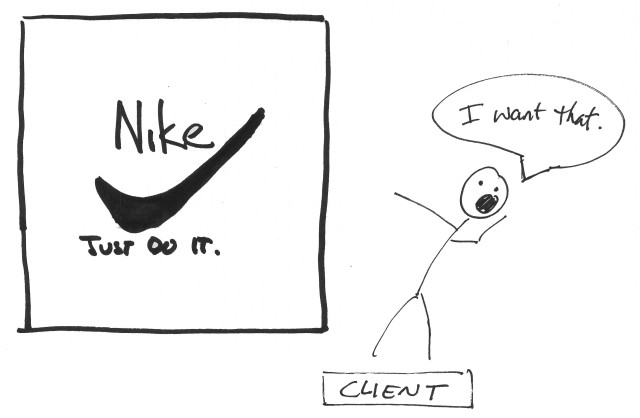How to Increase Your Social Presence with Nike's Creative Brief
Why is finding content that will boost your social presence like trying to find the ancient severed head of the sculpture Winged Victory of Samothrace?
It’s still lost somewhere in Greece after 152 years.
The reason may be a lack of deep knowledge that leads to perfect messaging. If you’re struggling to reach a viral social storm, you can learn from the successful work of professional agencies.
Not from their enviable end products…
…but from how they made them.
Media craftsmanship begins with the creative brief. A brief is the summation of research, learning, conversations and interviews that an account manager conducts to learn about her client company. That data helps the account manager, client and creative team generate the single idea that is most likely to help move the marketplace.
That idea is what is contained in the brief.
The Creative Brief

The brief explains this single idea with simplicity and vitality, usually on a single page. It’s handed to the creative team who craft the content. (The creative team will have often influenced the brief itself.)
The brief is livelier than: “Sell more chicken burgers.”
Higher sales is not the goal that can enrich the creative department’s juice – that’s why the account manager actually has a creative job to do (and many account managers are creative people in disgust – I mean disguise.)
Selling more is an amorphous goal that doesn’t cut to the gizzard of what problem the company wants to fix such as: Why are people are not buying enough chicken burgers?
That’s already more interesting.
But such a question is just the beginning. The account manager’s job is to research, hold meetings with people who know the product and its history and learn enough about the vertical – its ebbs and flows – to render a studied hunch on the best message. This process can take between a few days and weeks.
It’s called getting the background.
Backgrounders
Apple for example has used a backgrounder that asks no less than 36 questions about marketing, audience and tactics, all of which are used to create a one page brief for a single advertisement.
All of the background information is entwined by the account manager to create the armature. In sculpture, the armature is an internal skeleton often made from aluminum wire that will support the outer form of artwork.

Much deliberation came prior to crafting the Winged Victory of Samothrace (at the Louvre, don’t miss it.) This masterpiece depicting the mythological Nike would have been impossible to conjure if Pythokritos of Rhodes shot chisel straight to rock, proclaiming: “Let’s make ourselves a flying woman!”
Too often that’s how companies make content…but that’s not the armature of the real Nike.
See a Real Nike Brief
Here’s “the main idea conveyed” from a brief used by Nike, written by Dalya Taman. (Remember, it’s designed to inspire their creative team…)
“Nike Attire & Equipment will leave you feeling like a famous athlete. The way it fits and the way it looks will make people turn heads and wonder “who is that?!” Nike will make you feel like you can do the impossible and it will be easy doing it.”
What else was in that Nike brief?
- Project Description
- Objection
- Copy Strategy
- Who are we talking to?
- What are they like?
- What’s the main idea we’re trying to convey?
- What supports this idea?
- Competition (hint: everyone)
- Emotional / Psychological Barriers
- Brand History
- Brand Personality
- Tone of the advertising
- Execution mandatories
- Production Schedule
- What business are we in? (Answer: “Developing athlete potential”)
- Brand value (Answer: “The impossible is possible”)
Now you know what goes into your favorite Nike ads.
To boost your social presence you must first produce armature – the brief – crafted by competent background material. That will steer creative minds to produce the most beneficial media to solve your advertising problem.



